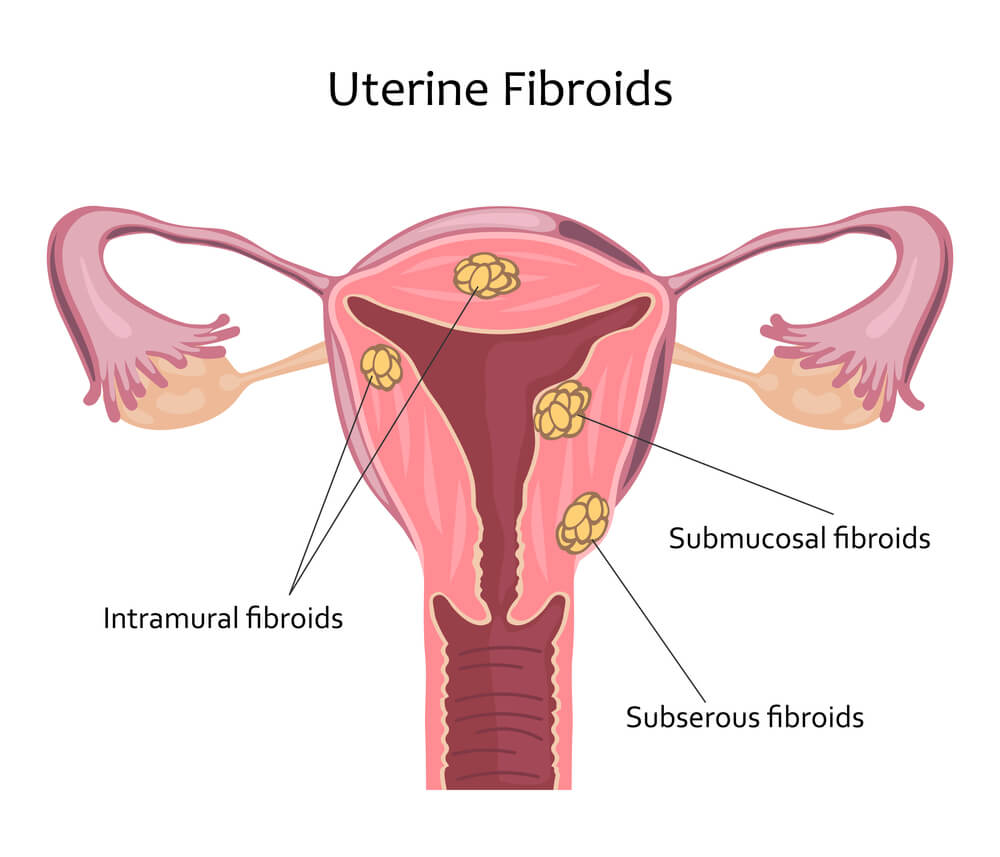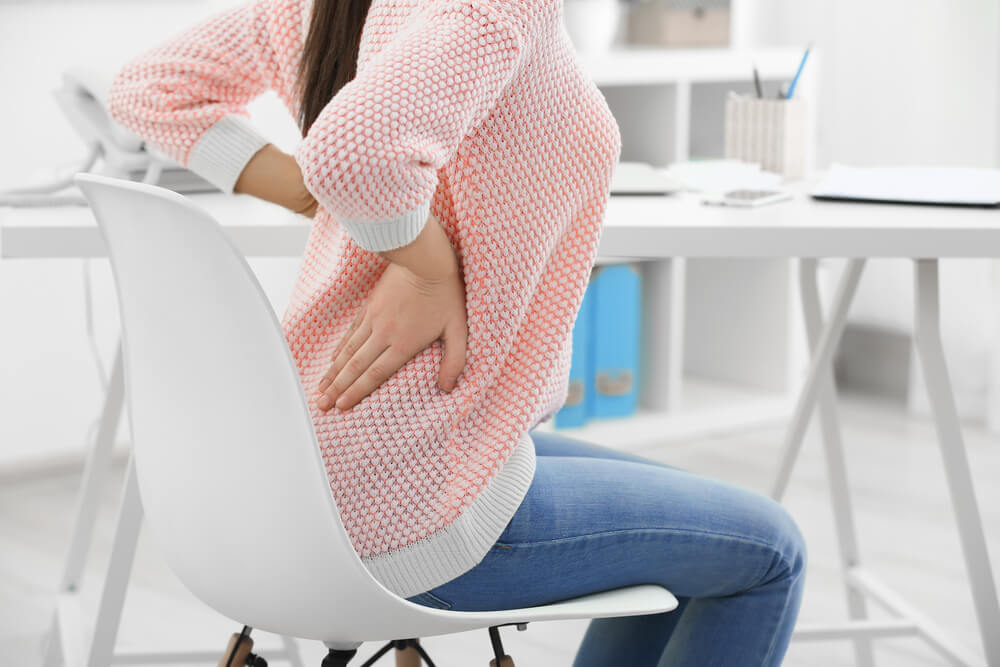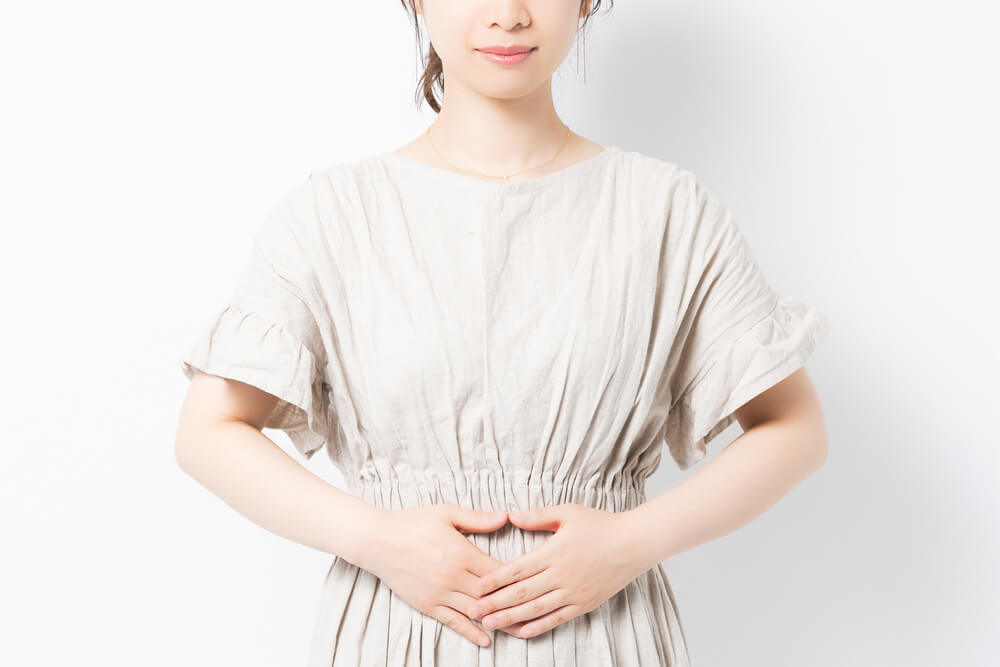As we age, our bodies, namely our cells, begin to slow down, deteriorate, change and stray from the natural biological processes that can cause numerous medical conditions. From extremely rare to abundantly common, women are predisposed to developing medical conditions that men are not. One such condition is called uterine fibroids and the prevalence is very high, but little is actually known regarding the cellular masses. While, most of the time, this condition is non-threatening, it is important to be knowledgeable about the symptoms and signs of fibroids so you can get them checked out and potentially catch something more serious early on. Below is a brief dialogue on what these fibroids actually are and the associated symptoms and possible causes.
What Is a Uterine Fibroid?
While many women may not have even heard of this condition, a very common misconception surrounding uterine fibroids is that they are cancerous tumors. In fact, fibroids are non-cancerous tumors that are made of smooth muscle cells and fibrous connective tissue that almost never turn into cancer. The medical term for these growths is leiomyomas. The size to which these growths can reach can vary greatly from the size of a pencil eraser to a melon. These growths are often embedded between the tissue and muscle layers of the uterus but they can also grow in other locations involving the uterus. Depending on where the fibroid grows does determine the type and there are three main locations that these fibroids can grow that include:
- Intramural fibroids – these grow within the muscle wall of the uterus and are the most common type of fibroid.
- Submucosal fibroids – these grow into the uterine cavity and are found within the muscle layer below the inner lining of the uterus.
- Subserosal fibroids – much less common than the two types stated above, this type of fibroid grows outside the uterine walls.
Sometimes a fibroid can even attach via a stem-like structure to the uterine wall. Because of the various shapes, sizes and locations that fibroids can grow in, many women have them and will never know unless they experience one or some related symptoms. The National Institute of Health and other medical agencies estimate that 80% of all women will develop at least one uterine fibroid during their lives. Many cases are asymptomatic and go undiagnosed, but the prevalence of this condition is extremely high. The age at which uterine fibroids begin to present is during the childbearing years, with most cases developing in their 30’s and 40’s.

Facts and Symptoms of Uterine Fibroids
As mentioned above, many women may not have heard of uterine fibroids or if they have heard of them, little is known. Here is some general information regarding the prevalence, causes and risk factors pertaining to uterine fibroids.
- Fibroids Are Not Cancer – these masses of cells are benign and non-cancerous tumors, but they can present symptoms similar to a type of uterine cancer. Due to a lack of a reliable testing method, doctors often will perform surgery, if risk factors are present, in order to determine if the symptoms are caused by uterine fibroids or the rare type of cancer called uterine sarcoma. There are some complications and dangers involved with uterine fibroids due to their size or location of growth.
- Race Plays Into Likelihood – women of African or Caribbean descent are 2-3x more likely to develop uterine fibroids in their lives compared to women of other ethnicities. In addition to a higher prevalence amongst women of African and Caribbean descent, fibroids tend to develop at a younger age and grow quicker, which is yet to be explained by medicine.
- Leading Cause of Hysterectomies – directly related to uterine fibroids, more than 200,000 hysterectomies are performed each year in the United States. A hysterectomy is the complete medical removal of the uterus and can include removal of the cervix, ovaries and Fallopian tubes. This procedure is a last resort and only recommended for severe cases of uterine fibroids because the removal of the uterus will leave the woman infertile. Severe pain and lack of progress with other forms of treatment are two reasons that a hysterectomy would be suggested.
- Alternative Treatments – thanks to the wonderful advancements in treatment options because now, hysterectomies are not the only possibility available that can be tried to treat these growths. There are several effective options available now to shrink or slow the growth of fibroids, for example, hormone therapy, ultrasound treatments, or even a myomectomy (which is the removal of the fibroids, not the uterus). If the uterine fibroids are not severe enough to require removal, then women have options to help deal with the symptoms such as ibuprofen, birth control pills or ablation (use of radio energy to destroy tissue cells).
- Pregnancy Is Still Possible – because almost all women will develop uterine fibroids at one point and it often occurs during childbearing years, many women have issue-free pregnancies. However, the presence of uterine fibroids can cause complications due to certain types of fibroids physically altering the shape and size of the uterus. Also, there is an elevated risk of having to deliver via cesarean section and a great risk of heavier bleeding after delivery.
- Unknown Causes – doctors and scientists are still researching and studying uterine fibroids in order to help determine any underlying risk factors and causes in order to better treat or even prevent their development. Right now, the leading theory is that their development and growth are related to the presence of the hormones progesterone and estrogen. Other possible causes may be related to genetic mutations, extracellular matrix (ECM), and other growth factors such as insulin-like growth factor.
- Asymptomatic and No Treatment – the good news is that a large percentage of the women that have uterine fibroids experience no symptoms and require no treatment. However, for the women that do have symptoms, it is best to know the common symptoms, so you can seek medical attention when they present since many symptoms could be related to more serious conditions.
Now, we have reached the point where you may be asking yourself some questions like, “what does fibroid pain feel like?”, “what symptoms will I have if I have uterine fibroids?” or, “do fibroids cause bloating?” The most common symptoms related to uterine fibroids are as follows:
- Heavier than normal menstrual bleeding
- Periods that last longer than a week
- Pain or pressure in the pelvis
- Increased urination and/or difficulty emptying bladder
- Constipation
- Fatigue
- Painful Sex
- Abnormal bloating
- Leg pain or backaches

From the list, there are no symptoms that are specifically unique to uterine fibroids and some are underlying symptoms to more serious conditions. Knowing when to see your doctor (keep reading if you are looking for a good gynecologist near you) is vitally important.
- Severe or lingering pelvic pain that won’t go away
- Excessive menstrual bleeding, prolonged or painful periods
- Abnormal spotting or bleeding between periods
- Abnormal and unexplained low red blood cell count
When it comes to your reproductive health, any abnormal symptom should be a cause of concern and reason to talk to your doctor about it. If you are searching for a new women’s healthcare provider in South Florida, Dr. Andrew Krinsky is one of the very best in his field. With more than three decades of exceptional experience helping patients with all of their gynecological needs, Dr. Krinsky will make sure you are receiving the best care possible and, ultimately, continue living your best life. To see all of the services and care that Dr. Krinsky has to offer, visit our site and set up your appointment today.


